Text
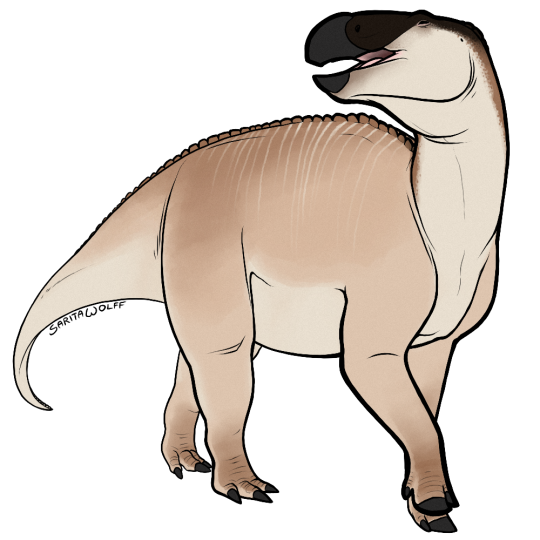
#Archovember Day 16 - Shantungosaurus giganteus
While hadrosaurs tend to be perceived as horse or cow-size, there were some intimidatingly huge members of the family. As the largest hadrosaur discovered so far, Shantungosaurus giganteus could reach 15 metres (49 ft) to 16.6 metres (54 ft) long and weigh an estimated 13 metric tons (14 short tons) to 16 metric tons (18 short tons). It lived in Late Cretaceous China, and would have filled a niche typically filled by sauropods in its ecosystem. As these dinosaurs have been found in a mass grave, it’s likely they also traveled in large, formidable herds. Shantungosaurus also had very large nostril holes which were probably covered by flaps of skin that could have inflated to amplify its calls.
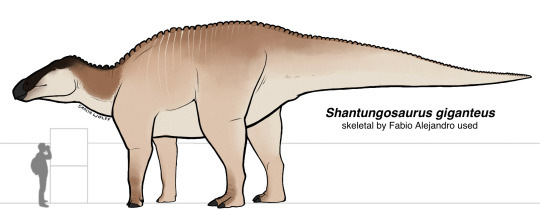
Shantungosaurus lived alongside other hadrosaurs like Laiyangosaurus, Tanius, and Tsintaosaurus, all quite large animals but still overshadowed by Shantungosaurus. It would have also lived alongside a diverse array of ceratopsians like Sinoceratops, Ischioceratops, Zhuchengceratops, and Micropachycephalosaurus, as well as the ankylosaur Pinacosaurus and the oviraptorosaur Anomalipes. So far, only one sauropod has been found in this area, Zhuchengtitan, the tallest animal in its ecosystem… beating Shantungosaurus by a neck. The apex predator of this region was the tyrannosaur Zhuchengtyrannus. However, it’s likely would not have been able to take on an adult Shantungosaurus, but could have picked off young or sick individuals that strayed from the herd.
#my art#SaritaDrawsPalaeo#Shantungosaurus giganteus#Shantungosaurus#edmontosaur#hadrosaurs#hadrosaurids#ornithopods#ornithischians#dinosaurs#archosaurs#archosauromorphs#reptiles#Archovember#Archovember2023
94 notes
·
View notes
Text
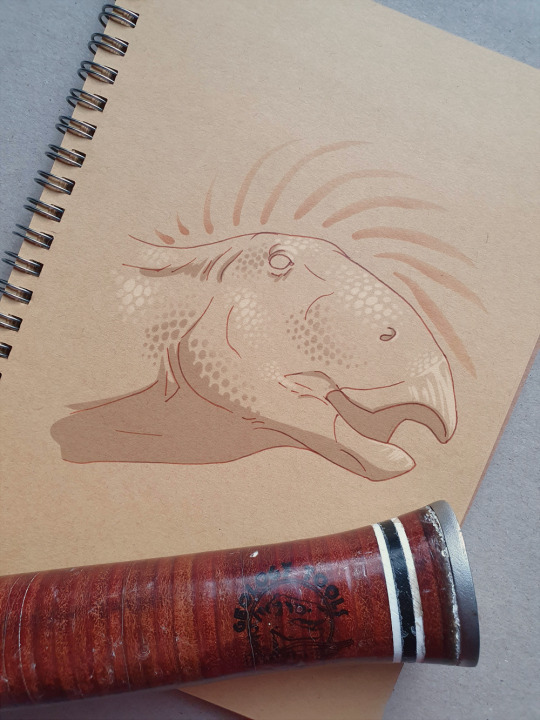
Day 16: Shantungosaurus giganteus
#paleoart#art#dinosaur#prehistoric#paleontology#digitalart#traditionalart#Archosaur#Archovember2023#Archovember#Dinovember#Dinovember2023#DrawDinovember#DrawDinovember2023#Shantungosaurus#Shantungosaurusgiganteus#hadrosaur#Ornithopoda#paleoblr#palaeoblr#digital art
34 notes
·
View notes
Text
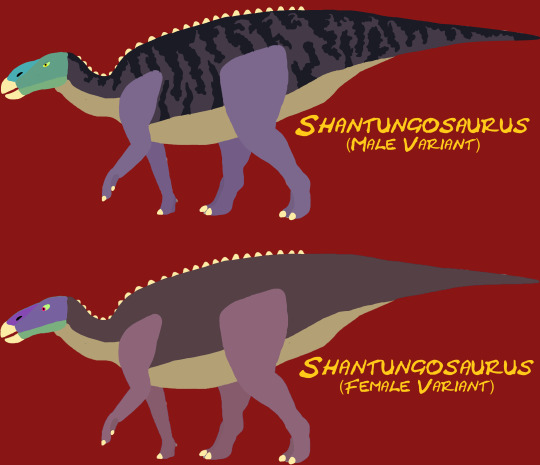
Shantungosaurus, lagarto de Shantung
Cada vez hay mas miembros en la manada de Kron
Shantungosaurus en la vida real
Shantungosaurus giganteus es la única especie conocida del género extinto Shantungosaurus' ("reptil de Shantung") es un género de dinosaurio ornitópodo hadrosáurido, que vivió a finales del período Cretácico, hace aproximadamente entre 77 a 70 millones de años durante el campaniense y el Maastrichtiense, en lo que es hoy Asia. Cuando se encontraron los restos de Shantungosaurus por primera vez, se encontraron en un lecho óseo de al menos cinco dinosaurios individuales. Aunque ninguno de estos era de un esqueleto completo, los compuestos de incorporación de los huesos de más de un individuo se han reunido con el el más grande produce un dinosaurio hadrosaurid de poco más de dieciséis metros y medio de largo, posiblemente con un peso de hasta dieciséis toneladas. Para poner esto en perspectiva, actualmente hace de Shantungosaurus el dinosaurio hadrosaurido conocido más grande, incluso más grande que otros. conocidos grandes hadrosaurios como Edmontosaurus y Magnapaulia.
Shantungosaurus en el remake de Disney Dinosaurio
Podria poner a estos hadrosauridos para compensar y acompañar al Maiasaura y al Parasaurolophus.
Los de la foto son Shang (el macho) y Seulji (la hembra)
Al macho lo llame así en referencia a Li Shang de la pelicula Mulan y a la hembra la llame así en referencia a una integrante de la banda surcoreana de K-Pop del mismo nombre, hoy llamada Zi.U
A Shang lo podria poner como un seguidor de Kron, al igual que Bruton, pero a diferencia de estos dos, Shang sobreviviría y llegaria a los Nidales junto con Seulji, Aladar, Baylene, Eema, Url, los lemures y el resto de la manada
2 notes
·
View notes
Text
Best of yesterdays dino-doodles.
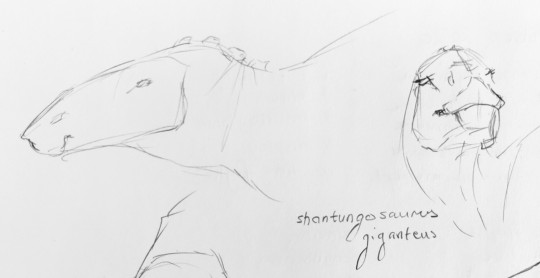
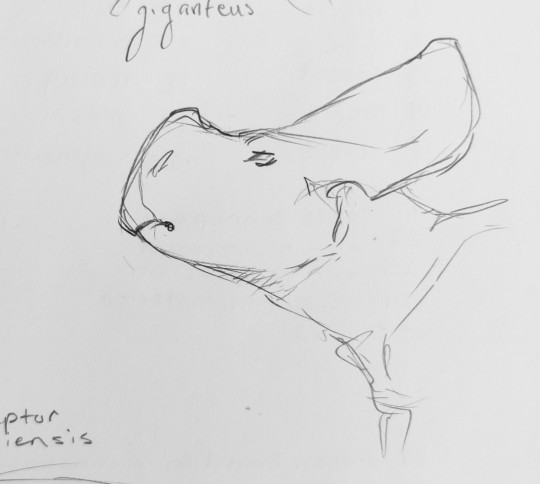
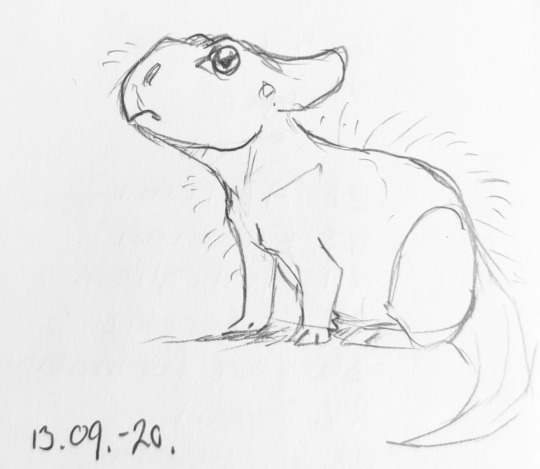
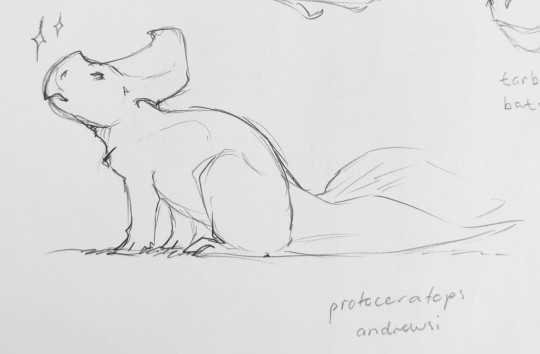
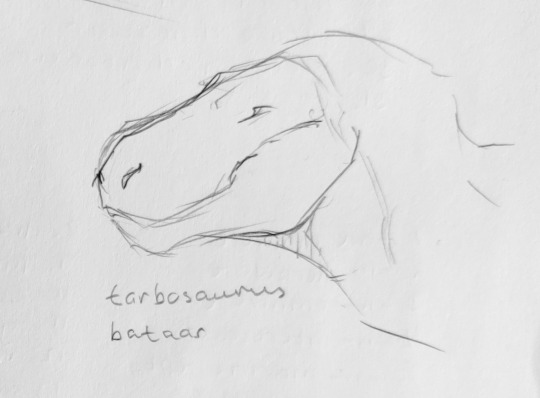
Shantungosaurus giganteus, protoceratops andrewsi and tarbosaurus bataar.
89 notes
·
View notes
Text

I missed day 10 yesterday after I finished the finals at the college and it’s been lot of fun from last 4 months, anyways I catch up with two different dinosaur days of Dinocember.
Day 10: Shantungosaurus giganteus.
Day 11: Display, but introducing a new basal Tetanurae theropod dinosaur of 2019, Asfaltovenator vialidadi, showing off with booming display.
#ornithoscelida#ornithischia#genasauria#neornithischia#cerapoda#ornithopoda#iguanodontia#hadrosauridae#edmontosaurini#shantungosaurus#theropoda#avetheropoda#carnosauria#asfaltovenator#dinosauria#dinocember#paleoart#my art#sketchbook
2 notes
·
View notes
Text
Shantungosaurus giganteus
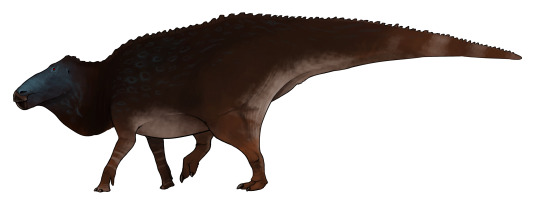
By Jack Wood on @thewoodparable
PLEASE support us on Patreon! We really do need all of your support to keep this blog running - any amount helps!
Name: Shantungosaurus giganteus
Name Meaning: Shandong Reptile
First Described: 1973
Described By: Hu
Classification: Dinosauria, Ornithischia, Genasauria, Neornithischia, Cerapoda, Ornithopoda, Iguanodontia, Dryomorpha, Ankylopollexia, Styracosterna, Hadrosauriformes, Hadrosauroidea, Hadrosauridae, Saurolophinae, “Anatosauria”, Edmontosaurini
Shantungosaurus is quite famous for being potentially the largest Ornithopod known, estimated at being about 14.7 meters or even 16.6 meters in length. It would have weighed about 16 tonnes and was truly ginormous, with a skull about 1.63 meters long. Its beak was toothless but it had jaws packed with 1,500 tiny teeth built to chew food. It may have even had a loose flap of skin over a hole near its nostrils, which would have been inflated to produce sound. It was found in the Xingezhuang Formation of the Wangshi Group of the Shandong Peninsula in China, dating back to the Campanian age of the Late Cretaceous, approximately 72 million years ago. It was closely related to Edmontosaurus, extending the reach of the Edmontosaurini clade out to Asia. It lived alongside other dinosaurs such as Sinoceratops, Zhuchengceratops, and Zhuchengtyrannus, which probably preyed upon it.
Source:
https://en.wikipedia.org/wiki/Shantungosaurus
Shout out goes to @liquuidbliss!
#shantungosaurus#shantungosaurus giganteus#dinosaur#hadrosaur#paleontology#prehistory#prehistoric life#dinosaurs#biology#a dinosaur a day#a-dinosaur-a-day#dinosaur of the day#dinosaur-of-the-day#science#nature#factfile#liquuidbliss#Dìneasar#डायनासोर#ديناصور#ডাইনোসর#risaeðla#ڈایناسور#deinosor#恐龍#恐龙#динозавр#dinosaurio#공룡#דינוזאור
52 notes
·
View notes
Photo

Average human compared to the largest dinosaurs of 5 major clades.
#Art#Size Comparison#Reference#Shantungosaurus#Shantungosaurus giganteus#Ornithopod#Argentinosaurus#Argentinosaurus huinculensis#Sauropod#Spinosaurus#Spinosaurus aegyptiacus#Theropod#Stegosaurus#Stegosaurus armatus#Stegosaur#Triceratops#Triceratops prorsus#Ceratopsian#Dinosaurs#Prehistoric#Mesozoic#Extinct
708 notes
·
View notes
Text

Whelp we’ve got about a week and a half til November (aaaaaah), so I guess I’ll post this year’s Archovember list now!
It’s a bit dinosaur-heavy this time, but there are a lot of species I’d really like to try my hand at! Also, we have two leptoceratopsians and two Araripesuchus species. I thought it would be interesting to compare and contrast these species within the same month, so I hope it doesn’t get /too/ repetitive!
For new folks: this is my “Draw Dinovember” list that I expanded out to include other archosauriforms. I started doing this a few years ago to challenge myself to draw species I’ve never drawn before and/or ones that don’t get a lot of attention. Feel free to join in! You can do the whole list, just the dinosaurs, just the pterosaurs, just the pseudosuchians, just your favorites, just ones you’ve never drawn before, roll a D20 and a D10 and draw the sum of whichever numbers you get, etc. Just make sure they’re posted on or after their specific day so I remember to share them on my blog! You can use #Archovember or #Archovember2023, as those are the tags I follow. (Note that I and the whole Archovember event are usually a lot more active on Instagram so if you have an IG I encourage you to join in there!)
Anyway, here is the list in case the graphic is hard to read:
1. Your Choice!
2. Furcatoceratops elucidans
3. Tupandactylus navigans
4. Deinosuchus hatcheri
5. Herrerasaurus ischigualastensis
6. Lewisuchus admixtus
7. Supersaurus vivianae
8. Zhejiangopterus linhaiensis
9. Dynamosuchus collisensis
10. Megalosaurus bucklandii
11. Macrospondylus bollensis
12. Miragaia longicollum
13. Dorygnathus banthensis
14. Leptoceratops gracilis
15. Stagonolepis robertsoni
16. Shantungosaurus giganteus
17. Paleorhinus bransoni
18. Cascocauda rong
19. Kelenken guillermoi
20. Prestosuchus chiniquensis
21. Yangchuanosaurus shangyouensis
22. Istiodactylus latidens
23. Kunbarrasaurus ieversi
24. Araripesuchus wegeneri
25. Tylocephale gilmorei
26. Ixalerpeton polesinensis
27. Udanoceratops tschizhovi
28. Tapejara wellnhoferi
29. Araripesuchus rattoides
30. Scutellosaurus lawleri
One last note, and a warning I usually issue to new paleoartists: while looking for references for these species you’ll come across David Peters. His references tend to dominate search results when looking for less well-known species. They are also highly inaccurate, even the skeletals. So make sure you omit “The Pterosaur Heresies” and “Reptile Evolution” from your google search. If you have issues finding references, let me know and I can share what I’m using!
#my art#Archovember#Archovember2023#SaritaDrawsPalaeo#dinosaurs#pterosaurs#pseudosuchians#archosaurs#archosauriforms
56 notes
·
View notes